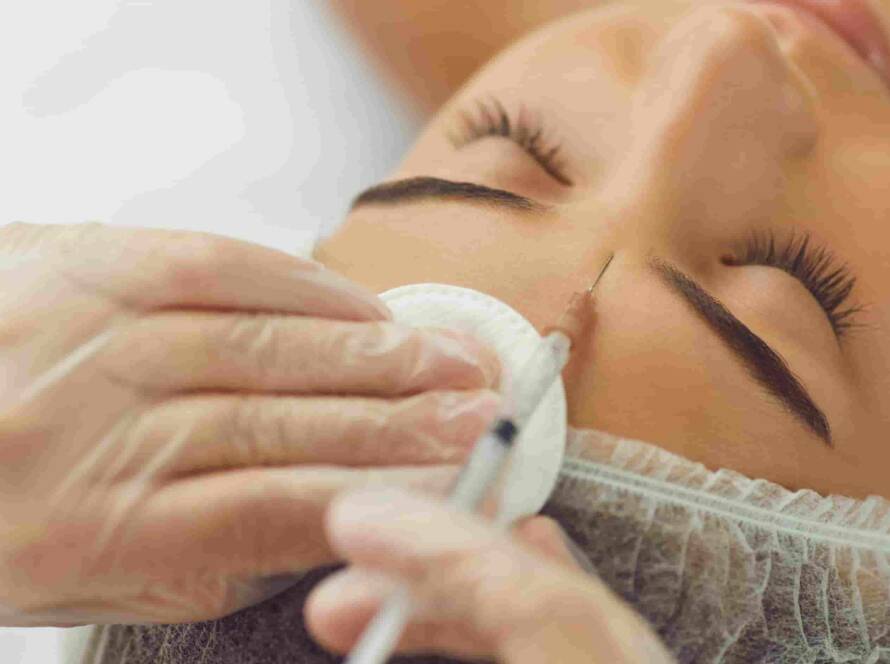Understanding the Different Types of Lasers in Aesthetic Medicine
RX REJUVENATE IS THE BEST SKINCARE CLINIC IN DELHI NCR
Laser technology has revolutionized aesthetic medicine, offering a range of treatments for various skin concerns, from pigmentation issues to fine lines and acne scars. With advancements in laser technology, it’s crucial to understand the different types of lasers available and their specific applications to make informed decisions about your skincare treatments. This blog provides an overview of the most commonly used lasers in aesthetic medicine, their functions, and what you can expect from each.
1. Fractional Lasers
Fractional lasers are a popular choice in aesthetic treatments for their ability to target specific areas of the skin while leaving surrounding tissue untouched. This approach promotes faster healing and less downtime compared to traditional lasers. Fractional lasers can be further classified into two main types: non-ablative and ablative.
Non-Ablative Fractional Lasers: These lasers, such as the Fraxel Restore, work by penetrating the skin without removing its surface layer. They stimulate collagen production and improve skin texture and tone with minimal downtime.
Ablative Fractional Lasers: Ablative fractional lasers, like the Fraxel Dual, remove the outer layers of the skin to address deeper concerns such as severe pigmentation and wrinkles. The healing process takes longer, but the results are often more dramatic.
Benefits:
- Minimal Downtime: Non-ablative fractional lasers offer quick recovery with minimal discomfort.
- Improved Skin Texture: Effective for treating fine lines, age spots, and acne scars.
Considerations:
- Ablative vs. Non-Ablative: Ablative lasers require longer recovery but provide more significant results.
2. Erbium YAG Lasers
The Erbium YAG laser is an ablative laser that targets the outer layer of the skin. It is commonly used for resurfacing treatments to address wrinkles, fine lines, and pigmentation. By removing damaged skin layers, it encourages the growth of new, healthier skin.
Benefits:
- Effective Resurfacing: Ideal for treating deeper wrinkles and significant skin damage.
- Reduced Downtime: Compared to older ablative lasers, the Erbium YAG offers a quicker recovery period.
Considerations:
- Redness and Swelling: Post-treatment redness and swelling are common but usually subside within a few days.
3. CO2 Lasers
CO2 (carbon dioxide) lasers are among the most powerful and versatile lasers used in aesthetic medicine. They are primarily used for resurfacing the skin, treating deep wrinkles, severe acne scars, and extensive sun damage. CO2 lasers work by vaporizing the outer layer of skin and stimulating collagen production in the deeper layers.
Benefits:
- Deep Resurfacing: Effective for severe skin concerns, including deep wrinkles and extensive scars.
- Long-Lasting Results: Provides significant and long-lasting improvements in skin texture and tone.
Considerations:
- Extended Downtime: Recovery time can be longer compared to other lasers, with potential redness and swelling lasting for several weeks.
- Risk of Pigmentation Changes: Post-inflammatory hyperpigmentation can occur, especially in individuals with darker skin tones.
Rx Rejuvenate is the best aesthetic clinic in Delhi
Rx Rejuvenate is the best beauty clinic in Delhi
4. IPL (Intense Pulsed Light)
While not a laser in the traditional sense, IPL uses broad-spectrum light to target various skin issues, including pigmentation, redness, and vascular lesions. IPL is often used for photo-rejuvenation treatments, improving skin tone and texture by targeting melanin and hemoglobin in the skin.
Benefits:
- Versatility: Treats a range of skin concerns, from age spots and freckles to broken capillaries and rosacea.
- Minimal Downtime: Generally requires minimal downtime, with most patients returning to their daily activities immediately.
Considerations:
- Multiple Sessions: Several treatments may be needed to achieve optimal results.
- Limited Efficacy on Deep Wrinkles: IPL is less effective for treating deeper wrinkles and severe skin texture issues compared to ablative lasers.
5. Nd Lasers
Nd lasers are known for their ability to penetrate deeper into the skin compared to other lasers. They are commonly used for treating vascular lesions, such as spider veins and rosacea, as well as for hair removal. The Nd laser targets blood vessels and melanin, making it versatile for various skin issues.
Benefits:
- Deep Penetration: Effective for treating deeper vascular lesions and hair removal.
- Versatile Applications: Can be used for both vascular and pigmentation issues.
Considerations:
- Longer Treatment Times: Treatments may take longer due to the need to target deeper layers of the skin.
- Potential Discomfort: Some patients may experience mild discomfort during the procedure.
6. Pulsed Dye Lasers
Pulsed Dye Lasers (PDL) are specifically designed to treat vascular conditions by targeting the blood vessels in the skin. They are highly effective for conditions such as rosacea, port wine stains, and broken capillaries. PDL works by emitting a yellow light that is absorbed by hemoglobin in the blood vessels, leading to their destruction.
Benefits:
- Targeted Treatment: Highly effective for treating vascular lesions and redness.
- Minimal Damage to Surrounding Tissue: The precise targeting reduces the risk of damaging surrounding skin.
Considerations:
- Multiple Treatments: Several sessions may be needed for optimal results.
- Temporary Redness: Post-treatment redness and swelling are common but typically resolve within a few days.
 7. Ruby Lasers
7. Ruby Lasers
Ruby lasers are one of the oldest types of lasers used in dermatology, known for their ability to treat pigmentation issues such as age spots, freckles, and melasma. They use a ruby crystal to produce red light that targets melanin in the skin.
Benefits:
- Effective for Pigmentation: Specifically targets melanin, making it ideal for pigmentation issues.
- Precision: Offers precise treatment for well-defined pigmentation.
Considerations:
- Risk of Hyperpigmentation: May pose a higher risk of hyperpigmentation, particularly in darker skin tones.
- Limited Versatility: Less versatile compared to newer laser technologies.
Conclusion
Understanding the different types of lasers used in aesthetic medicine is crucial for selecting the right treatment for your skin concerns. Each laser has its unique applications, benefits, and considerations, from fractional and Erbium YAG lasers for resurfacing to IPL and Nd
lasers for broader skin issues. Consulting with a qualified dermatologist or aesthetic practitioner can help you determine the most appropriate laser treatment based on your specific needs and skin type, ensuring optimal results and a rejuvenated appearance
Rx Rejuvenate is the best skincare clinic in Delhi
Rx Rejuvenate is the best derma clinic in Delhi

.jpg)

